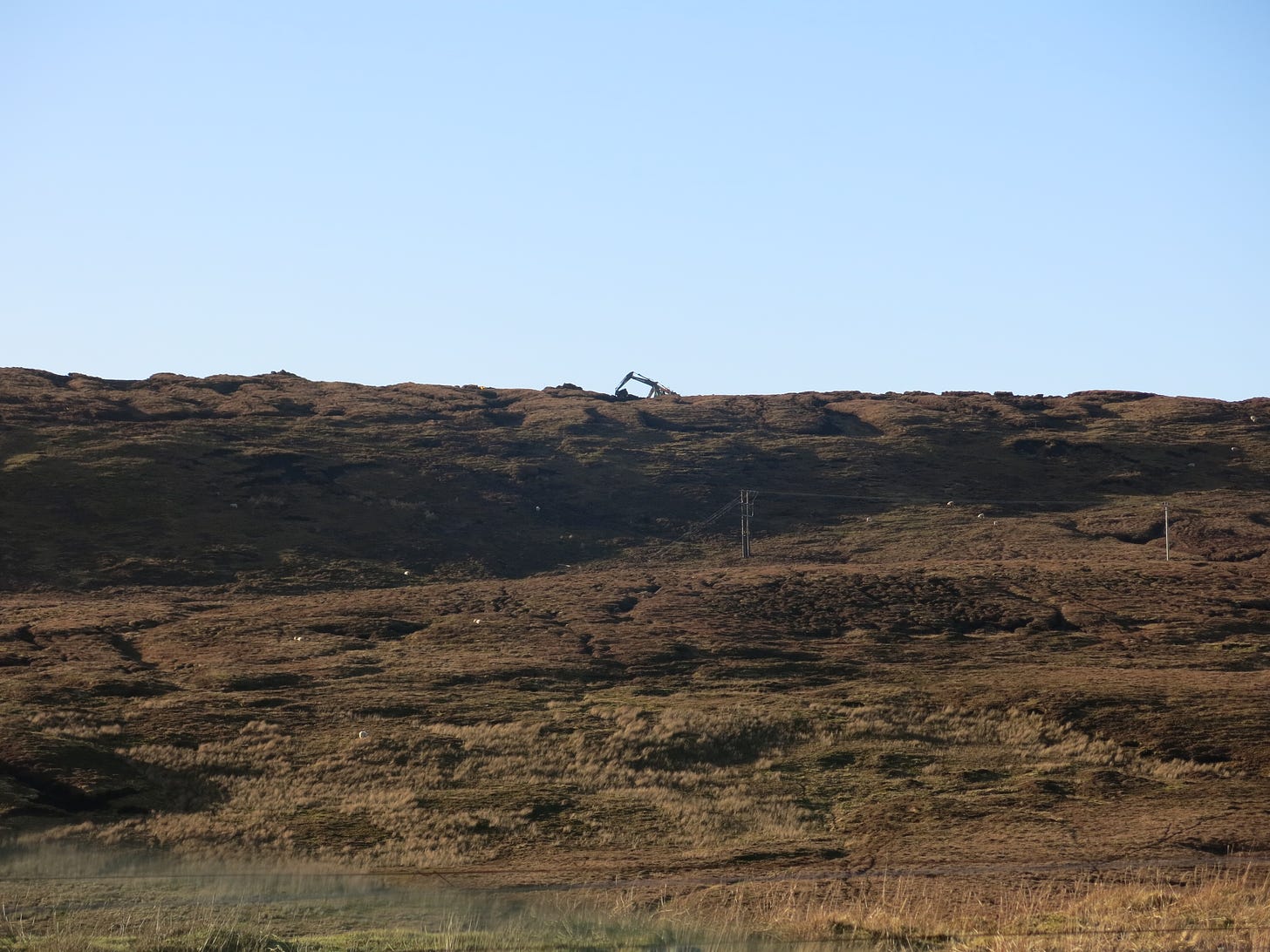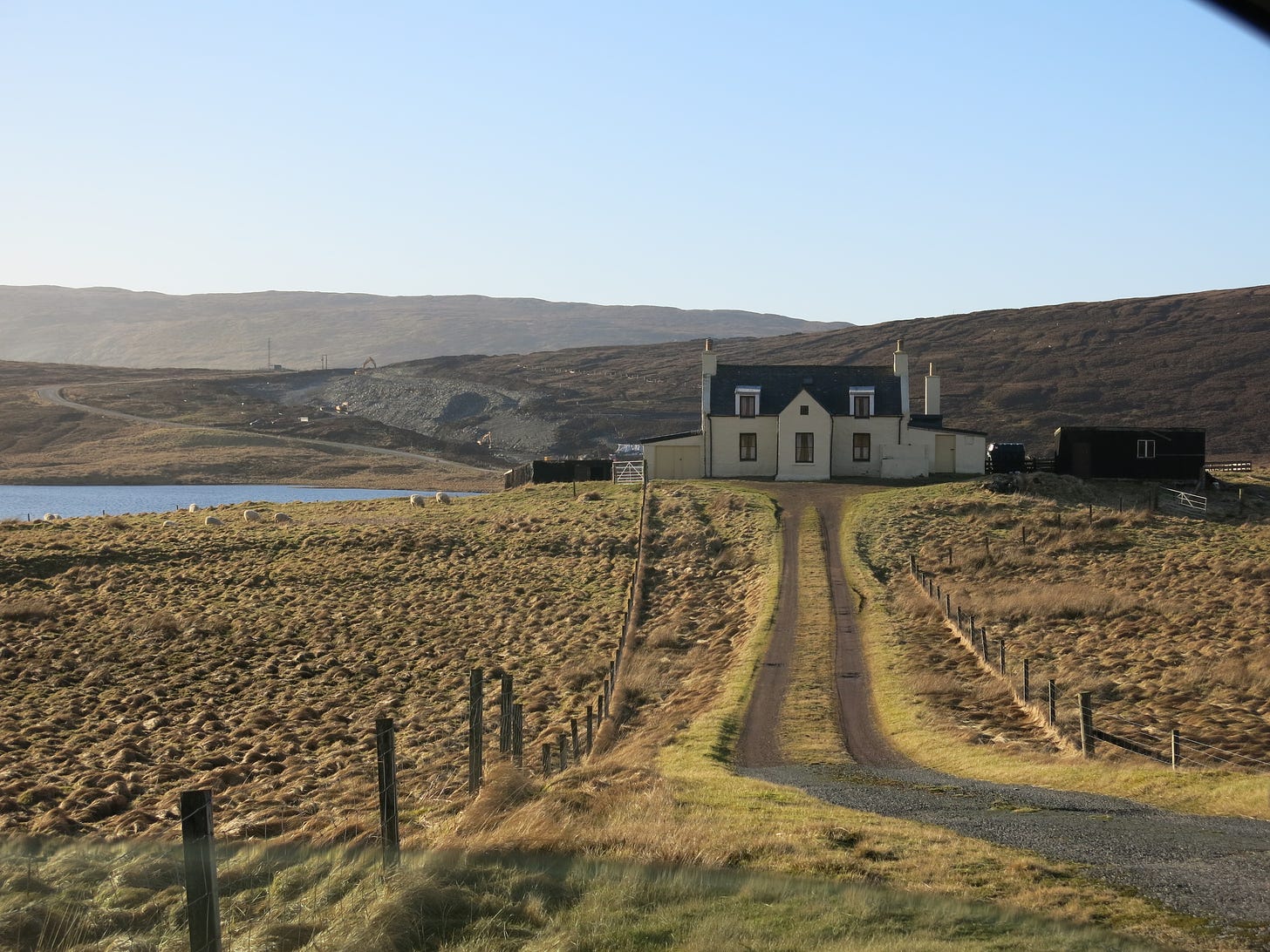I remember driving north from Lerwick for the first time, into a gritty winter darkness that, during my week-long stay, occasionally glowed but never lifted. It was early 1979, the first oil was flowing from the Brent field into the uncompleted Sullom Voe oil terminal. Shetland seethed with industrial activity, thousands of temporary workers, and a kind of murky, atmospheric grime that penetrated cars, clothes and respiratory systems.
I was there to report on what was going on at Calback Ness for an oil industry paper. I saw almost no scenery. Darkness was upon the face of the rock. Everyone was cold and wet and too busy to talk. Sullom Voe was a cost-plus contract, North Sea oil the UK’s deliverance from coal. Or, for Mrs Thatcher, from miners, from unions, from strikes and dependence on the workers. So profit for the constructors of Europe’s biggest oil terminal would be added no matter the expense. The level of wastage and casual theft was extraordinary. The dumping of whole fleets of vehicles and their burial as Orka Voe was filled in seems like a legend. But it happened.
Forty-two years later, I am driving through the Shetland Highlands, my favourite road in the isles, from Voe to Aith, winding high to the Loch of Gonfirth, low to East Burrafirth, over to Aith and beyond to Bixter. It’s Shetland at its most Scottish. It’s a regular trip to the vets, and normally I’d loop back south through Weisdale and return home via Kergord, just to see Shetland’s only old forest and check if my golf club is open for business at Asta.
I’m avoiding that route, though, as it would take me deep into the heart of a new industrial darkness. The construction not of the Viking Energy Wind Farm for what used to the South of Scotland Electricity Board, but of the access roads that will enable a collection of colossal turbines to be erected.
This time I can see the level of destruction being meted out. This time I know the landscape being ripped apart. Intimately.
I used to like wind turbines. Just as, when I was a small child, I was excited by electricity pylons as they marched, skeletal giants, across Scotland. I supported the idea of a wind farm on windy Shetland, before I knew what it was going to cost us.
Supporters argued at first that Viking was key to the future economic viability of the isles, once the oil ran out. It would help in the battle against climate change. Originally, when part-funded by the Shetland Charitable Trust - ironically the custodian of Shetland’s oil income - the community was set to benefit financially; hugely. But now, the Trust having pulled out, SSE will donate a derisory amount to local community groups in compensation. A few folk will become or remain multi-millionaires. Some new chairs will be bought for one or two community halls. And in the end, we who live here will be left with the whirring and whumping of blades, dead birds, some mountain bike tracks, new roads, peat bog of uncertain stability and vast empty car parks. Most of the money will go south.
“Rewilding” has been in the news this week, and the poet Kathleen Jamie has been much quoted on how Scotland has never, for hundreds of years, been truly wild. But the Lang Kames, the vast stretch of peat bog, ridge and valley currently being excavated, concreted, tarred and tamed, was as intimidating and wild a place as Shetland could ever offer. It was like a tract of boggy desert, uncompromising and glum. Implacably itself.
My last drive north from Lerwick to Voe, a decade after the first one, took place on a day of glowing calm. The Kames enveloped me, shrank me to a minute scale in the face of uncompromising, brooding bleakness. It’s a vast building site. Now, the famous Half Way House, once a drovers’ hostelry, where cattle would be rested on the trip north or south, is dwarfed by the scraped-out network of roads and storage areas.
If only there hadn’t been such fervent, embittered opposition, a few locals say. If only there hadn’t been such delays. The community would have gained so much economically if the Charitable Trust hadn’t been forced to pull out. Now, all that prospective money has slipped through our hands. But there were faults on both sides. An intransigent Charitable Trust insisted it knew best, explained itself badly. An aggressive, emotive and entrenched opposition forced legal actions which saw the Trust kick its ball into the willing hands of SSE and flounce back into the world of investment banking.
But it’s not about the money. It’s about place and love of place. It’s about wildness, if not wilderness, carelessly sacrificed. The unwilding of Shetland.
It’s about loss. And as the spring begins to shed its light on the mess that continues to be made…it hurts.
All pictures by Tom Morton


